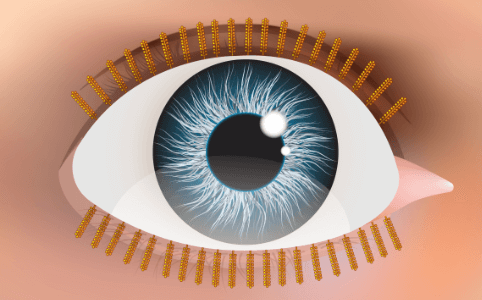
Looking for dry eye statistics? In this article, you’ll learn more about current statistics and risk factors.
Dry Eye Statistics- At a Glance:
- Currently between 16.7 million and 50.2 million Americans have dry eyes. This is between 5-15% of the population. [1]
- Dry Eye Disease in the USA costs over $55.4 billion to the economy each year [10]
- Google trends for the topic “dry eye syndrome” have doubled between December 2010 and July 2020 [2]
- A 2012 Gallup Poll suggested that 29 million Americans will suffer from the disease by 2022 [3]
- 2004 data suggested that 4.88 million Americans over the age of 50 have dry eyes [4]
- A large population study of over 79,866 people in Netherlands found that 9.1% had dry eye disease [6]
- Global dry eye treatments are expected to top over USD$6.6billion by the end of 2027 [5]
- Around one billion people have Meibomian Gland Dysfunction globally [9]

What are the symptoms of dry eyes?
One of the most common symptoms of dry eyes is blurred eyesight. For example, if you blink your eyes and things look clearer, you may have dry eyes.
Other common symptoms include:
- A stinging, burning, scratching sensation in your eyes
- Dry eyes
- Gritty/sandy eyes
- Red eyes
- Watery eyes
- Sensitivity to light
- Tired eyes or eye fatigue- your eyes feel more tired than what you feel otherwise
- Difficulty wearing contact lenses
- Filmy vision
- Feels like something in your eye
The eye’s normal tear film

The normal tear film has three layers:
Oily layer (outermost layer)- contains a complex mix of lipids from the Meibomian Glands in the eyelids.
Watery layer (middle layer)- contains fluid from the lacrimal gland. This is the thickest layer.
Mucous layer (inner layer)- contains mucous from the conjunctival goblet cells. This layer helps to anchor the tears to the cornea.
Over 86% of people with dry eyes show signs of Meibomian Gland Dysfunction [7]
What are the risk factors for dry eyes?
According to global experts [8], the non-modifiable risk factors for dry eyes are:
- Age
- Female sex
- Asian Race
- Meibomian Gland Dysfunction
- Connective Tissue Diseases
- Sjogrens Syndrome
The modifiable risk factors for dry eyes are:
- Androgen deficiency
- Computer use
- Contact lens wear
- Hormone replacement therapy
- Hematopoietic stem cell transplantation
- Environment: pollution, low humidity, sick building syndrome
- Medications: antihistamines, antidepressants, anxiolytics, isotretinoin
Probable risk factors include low fatty acid intake, allergic conjunctivitis and refractive surgery.
How to treat dry eyes
One of the most important steps to treating dry eyes is to educate the person about dry eyes. This is best done at an eye examination. Patients often talk with their Optometrist or Ophthalmologist about some of the reasons they have dry eyes, the treatment options and the long term prognosis.
Dry eyes initially is treated by looking at a person’s lifestyle and work routines. This might mean reducing airflow, increasing humidity or tweaking the home or workplace.
Other changes such as identifying medication contributors and increasing supplements (e.g. omega-three) can help.
Eye drops and eyelid cleansers can also improve the comfort of dry eyes. Prescription eye drops can help.
These are some of the initial steps that can improve dry eyes. Read more about further dry eye treatments here.
Dry eye is chronic and progressive
Dry eyes is a condition that can be controlled but does not go away. Left untreated, it can lead to permanent damage to the eyes.
Screen time is here to stay. The prevalence of dry eye disease is likely to continue to rise.
Future studies may see younger people develop dry eye at a high rate.
Looking for Dry Eye Relief?
Find a dry eye clinic near you. See a doctor who is passionate about dry eyes. Form a plan to get relief from dry eyes.
Sources:
- [1] Source- USA General Population 2018 Cross Sectional Study and Census.gov Population Clock – accessed May 18th 2023
- [2] Source- Google Trends – accessed August 2nd 2020
- [3] Source- Pharmacy Times– accessed August 5th 2020
- [4] Source Physicians Health Studies. (2004 data for men and women)
- [5] Future market insights: Dry Eye Syndrome Treatment Market 2016
- [6] Source: Ocular Surface Journal
- [7] Source: Cornea Journal
- [8] TFOS DEWS II 2017 Epidemiology Report
- [9] International Workshop on Meibomian Gland Dysfunction (2011)
- [10] Source- Cornea Journal (2011)

